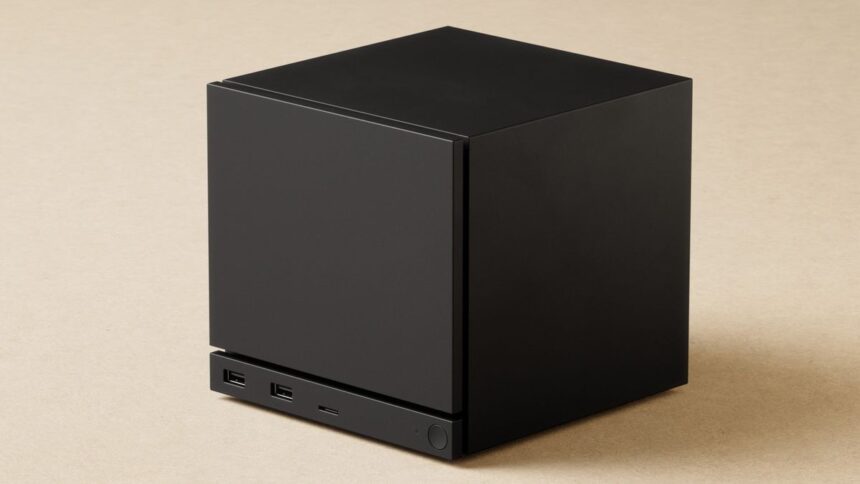While many fans are eagerly waiting for a Steam Deck 2—something Valve has already suggested won’t arrive anytime soon—the company has introduced a different piece of hardware. This week, Valve unveiled the Steam Machine, a compact mini-PC powered by an AMD Zen 4 CPU and an RDNA 3 GPU. According to early impressions from Digital Foundry, its theoretical performance lands somewhere between the Xbox Series S and the PlayStation 5, leaning closer to Sony’s console.
At a closed-door event for journalists, Valve also showcased two other new devices: the Steam Frame VR headset and a new controller designed to eliminate traditional mouse input. Reporters were allowed to try the hardware briefly, giving us a first look at what Valve’s next-generation gaming devices might offer—though only at a surface level for now.
Theoretical performance of the Steam Machine
Digital Foundry notes that the Steam Machine’s specifications “suggest performance midway between the Xbox Series S and the standard PlayStation 5, perhaps a little closer to Sony’s console.”
The mini-PC comes with a six-core, 12-thread AMD Zen 4 processor, likely similar to the Ryzen 5 7600. For comparison, both the PS5 and Xbox Series consoles utilise eight-core Zen 2 CPUs, an architecture that dates back to the Ryzen 3000 era on PC. While the consoles offer more cores, the Steam Machine benefits from a far more modern and efficient CPU design.
The GPU is where performance becomes more uncertain. Valve is reportedly using a custom RDNA 3 chip, believed to be a cut-down variant of the Radeon RX 7600, or more realistically the RX 7600M mobile version. This suggests solid 1080p performance, but it may fall behind modern consoles in raw graphics power.
A major limitation is the GPU’s 8 GB of VRAM—a capacity increasingly tight for today’s demanding games. The PS5 and Xbox Series X/S both exceed this amount, with Sony’s system able to allocate roughly 12 GB to graphics when necessary. The Steam Machine does include 16 GB of system RAM, rounding out the hardware package.
Valve claims the device has “enough performance to play all games at 4K and 60 FPS using upscaling like FSR.” That statement has raised some skepticism, mainly because FSR 3—which the Steam Machine would rely on—is significantly weaker than FSR 4, AMD’s AI-enhanced solution available only on RDNA 4 GPUs.
Real-world performance: still unknown
For now, no concrete performance metrics have been released. Testers were not provided with FPS data or benchmarking tools. PC Gamer reported that Cyberpunk 2077 ran more smoothly at native 1080p than at 4K using FSR upscaling, even likely in its performance mode—suggesting that 4K60 might be achievable only in less demanding scenarios.
Until full benchmarks arrive, the true capabilities of the Steam Machine remain unclear. However, based on current information, Valve appears to be targeting a middle ground between portability, affordability, and console-level power, rather than outright high-end PC performance.











